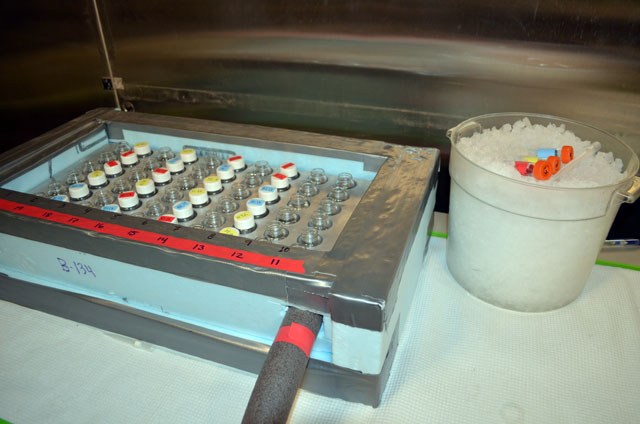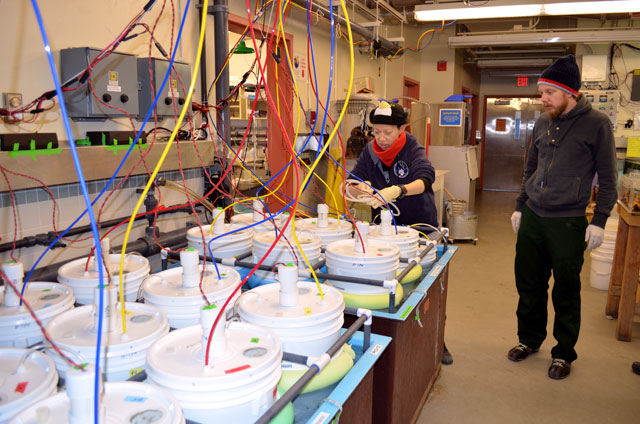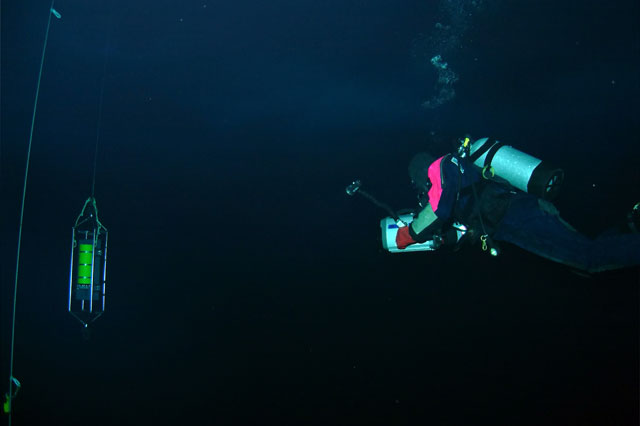|
Page 2/2 - Posted April 6, 2012
The scientists employed a new technology developed by Todd Martz The instruments continuously and autonomously monitor pH, providing important baseline data from which scientists can monitor future changes in ocean acidity, according to Hofmann. “It’s a little device that’s been giving us some really important data. We’re really stoked to be using it down here, because this is the first time we’ve ever had any of these kinds of numbers for places under the sea ice,” Hofmann said. So far, she and her colleagues have found widespread variations between sites. Coastal areas off the western United States experience regular 24-hour fluxes in pH levels that would be considered highly corrosive to the organisms that live in those regions, but there are no obvious ill effects. In Antarctica, the pH seems to be fairly steady. “This is something we didn’t know,” Hofmann said. “On the coast, we do have acidic events that are due to other processes.” Just what’s acidic to the Antarctic sea urchin is something Hofmann’s team is exploring in a variety of ways, from the effects on the organism’s metabolism down to the cellular level. McMurdo divers Rob Robbins and Steve Rupp collected adult sea urchins under the ice from an area near Cape Evans on Ross Island where the critters are particularly productive, according to UCSB graduate student Lydia Kapsenberg The sea urchins were then spawned in the lab, and about 160,000 larvae put into white plastic buckets immersed in a tank of seawater chilled to an ambient minus 1.8 centigrade. Different colored lines snake from the ceiling of the aquarium lab carrying CO2 to the various buckets. Blue-colored gas lines pump in carbon dioxide at 395 parts per million (ppm), roughly today’s current atmospheric conditions. A yellow line carries gas at 600 to 700ppm, and the red line is at the extreme 1,000ppm for end-of-the-century predictions. 
Photo Credit: Peter Rejcek
An aluminum heat block with holes drilled in it for vials containing sea urchin larvae tests how the organisms deal with the additional stress of warmer seawater.
Pauline Yu “We want to see if there is a metabolic rate response in the larvae in response to the high CO2 levels,” Yu said. “They responded by being a little smaller.” Meanwhile, Kapsenberg oversees a different experiment that adds another stress — heat. An aluminum heat block with holes drilled in it for vials warms up the seawater as high as 20 degrees centigrade. About 20 percent of the developing larvae survive the extreme heat shock, she said. Climate change won’t work that fast, but some of even the most conservative estimates predict serious changes to both ocean acidity and temperature in the coming decades and centuries. Evolution is often considered a slow process, but Hofmann noted that there are instances of “rapid evolution.” Whether species like the polar sea urchin have such an evolutionary elasticity is another matter. “The environmental conditions that something gets used to and lives at and adapts to over long period of time shapes its ability to respond to future change,” Hofmann said. NSF-funded research in this article: Gretchen Hofmann, University of California, Santa Barbara, Award No. 0944201 |



For USAP Participants |
For The Public |
For Researchers and EducatorsContact UsU.S. National Science FoundationOffice of Polar Programs Geosciences Directorate 2415 Eisenhower Avenue, Suite W7100 Alexandria, VA 22314 Sign up for the NSF Office of Polar Programs newsletter and events. Feedback Form |



